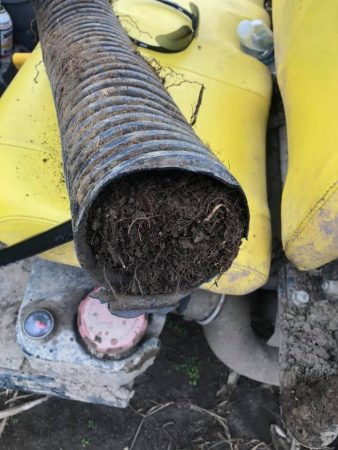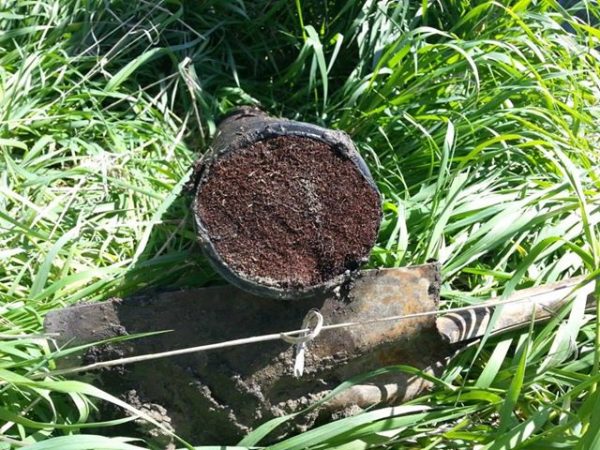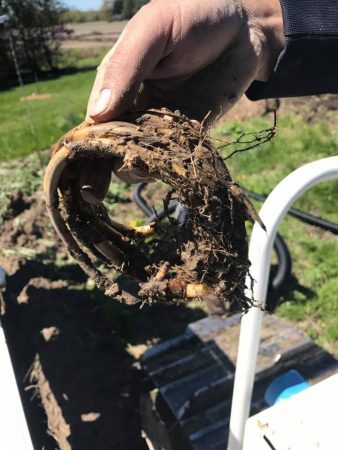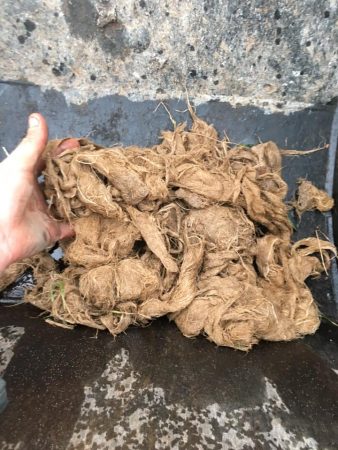
Features
Drainage Management Systems
Plugged up: roots in tile
Stay on top of blockages this spring and summer.
May 13, 2019 By Julienne Isaacs
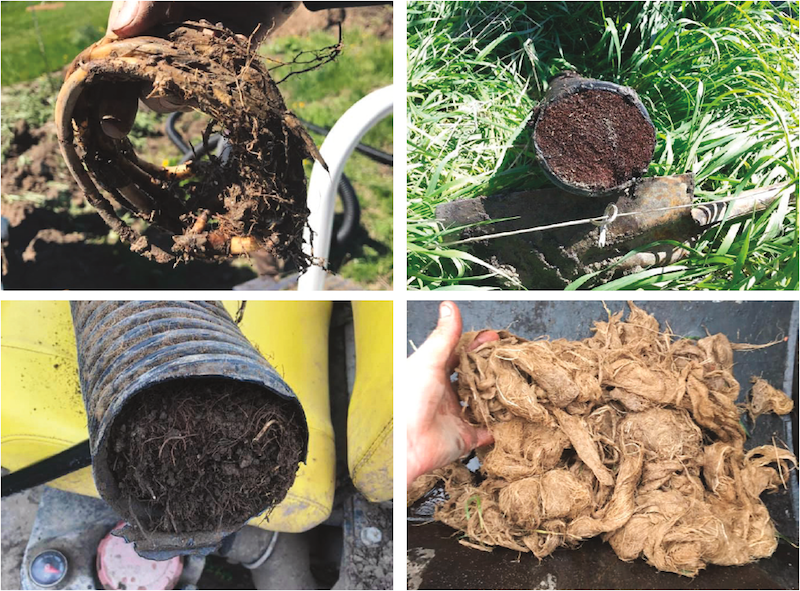 There's no shortage of evidence of roots plugging tile.
There's no shortage of evidence of roots plugging tile. In the last few years, blocked drain tile has become a major point of discussion for Ontario drainage contractors. But the problem has been around more than a few years.
Back in the 1980s, producers noticed problems with blocked tile when they started growing winter canola, says Peter Johnson, an agronomist and environmental advocate for the Land Improvement Contractors of Ontario (LICO).
“Winter canola fell by the wayside because of blackleg so we quit growing it and the problem for the most part disappeared, but it’s resurfaced in a major way since about 2016,” Johnson says. “But even before that we were getting reports of some plugging in drainage tile.”
Recently, producers have noticed plugged tile particularly when growing wheat, but Johnson says there are confirmed cases of alfalfa, corn and cereal rye plugging tile, as well as cover crops such as daikon radish.
The question is: are particular crops responsible for blocked tile, or is the problem rooted in installation errors and methods?
Are particular crops responsible for blocked tile, or is the problem rooted in installation errors and methods?
Researchers at Iowa State University have done studies in side-by-side prairie and crop plots to compare their root growth and impact on drainage tile. In one 2017 study, they sent a camera along tile to compare root growth in a diverse prairie plot containing a mix of forage legumes and native tallgrass to a plot containing corn and soy.
Root penetration into the tile was minimal in the study and none of the crops caused problems; the only troublemaker was a volunteer cottonwood tree, which sent a surprisingly large root – the size of a pinkie finger – into the tile.
Any blocked tile in a case like this would have to result from installation errors and would not be the fault of the crops being grown. Matthew Helmers, director of the Iowa Nutrient Research Centre and co-author of the 2017 study, says there are no documented commonalities in Iowa with plugged tile. To play it safe, he says, contractors should stay away from putting non-perforated pipe in locations where there might be trees.
Common causes
Johnson says there are some important differences between conditions in Iowa and most of Canada. For starters, tile is buried deeper in the United States, typically at about 3.5 to four feet, whereas in Canada it is generally buried at a depth of 2.5 to three feet.
Depth might have some impact, but Iowa farmers also don’t grow as much wheat as Canadian farmers; they grow more corn, soy and native grasses. And just recently, Johnson points out, tile drains in Indiana have been plugged, with the suspected culprit being oats grown as a cover crop after soybean harvest.
It’s thought that improved wheat varieties are part of the reason why the crop is a common culprit in cases of plugged tile, Johnson says. “We have better genetics and we’re doing everything we can to stimulate wheat yield. Big yields require big root systems. This can cause an issue with tile,” he says.
Big yields require big root systems. This can cause an issue with tile.
Another reason is moisture: when the season is dry, water-seeking roots tend to extend deeper than normal, and producers can see plugged tile the following spring.
“When it’s dry through grain fill and we get good wheat yields, the yield has to come from somewhere, so the wheat crop has sent the roots deep to make that yield. If there’s any water in the tile the wheat is going for it,” he says.
For example, after an “incredibly dry” season in 2016, many producers had problems with blocked tile in spring 2017.
While there isn’t any data proving connections between installation methods and blocked tile, there are commonalities, Johnson says.
“We’re starting to do everything we can to prevent any reduction in flow in the tile because it seems that where we get a reduction in flow, we end up with plugs,” he says. “If the tile is installed improperly and you get a grade rise, we’ll see that as a plug point.”
Some installation companies have begun using Ys instead of Ts in tile layout, because Ts will sometimes become plug points, he adds.
Connections have typically been made with inside connectors because they’re effective and easier to use, but inside connectors can also become plug points.
“Again, some installation companies have gone to outside connectors to try to keep the flow constant,” Johnson says.
“At this point in time, the industry is leaning toward monitoring and catching problems earlier. We might move to systems where we can access the tile easier. There are options for clearing plugs without digging them up. We don’t have definite solutions at this point in time.”
Possible solutions
Matt Williams, owner and president of Williams Drainage, says the response to clogged tile is to excavate the drain from the stretch that is blocked, typically an area of about 20 to 30 feet, and replace the tile.
“One of the best solutions is to switch to outside couplers rather than internal couplers. Most of the scenarios we’ve found have been some sort of blockage caused by a deviation in grade, or a T rather than a Y. Anything that allows a spot for water to sit and the roots to clog the tile,” he says.
In Williams’ experience, wheat and cover crops, particularly daikon radish, seem to cause most problems with blocked tile. “These seem to be stronger crops with better yields – this is a byproduct of that, it seems.”
But Williams is quick to say that the answer is not to stop growing these crops. “I see the advantages to cover crops – they work hand-in-hand with drainage. And I understand the benefits to wheat. If the water can’t get through the soil to the drains there’s no sense having drains,” he says.
Risk of blocked tile seems to be higher with any deviation in grade, and particularly with flatter grades.
Risk of blocked tile seems to be higher with any deviation in grade, and particularly with flatter grades. “We’re using the best technology available but there will always be deviations. Producers need a licensed contractor who will stand behind their work. The biggest thing is for contractors and farmers to work hand and hand, but there also have to be more studies on crop rotation and drain tile,” he says.
Williams says it’s crucial for contractors to begin documenting the circumstances where they find roots in tile so they can begin to come to a consensus on common causes. Contractors should send this data directly to Johnson, who hopes to compile the information and present it at the 2020 LICO conference.
“In the meantime, if any contractors want to send any ideas or strategies that they’ve tried that [have worked out well], let me know because we want to move forward and reduce this problem,” Johnson adds.
Print this page
